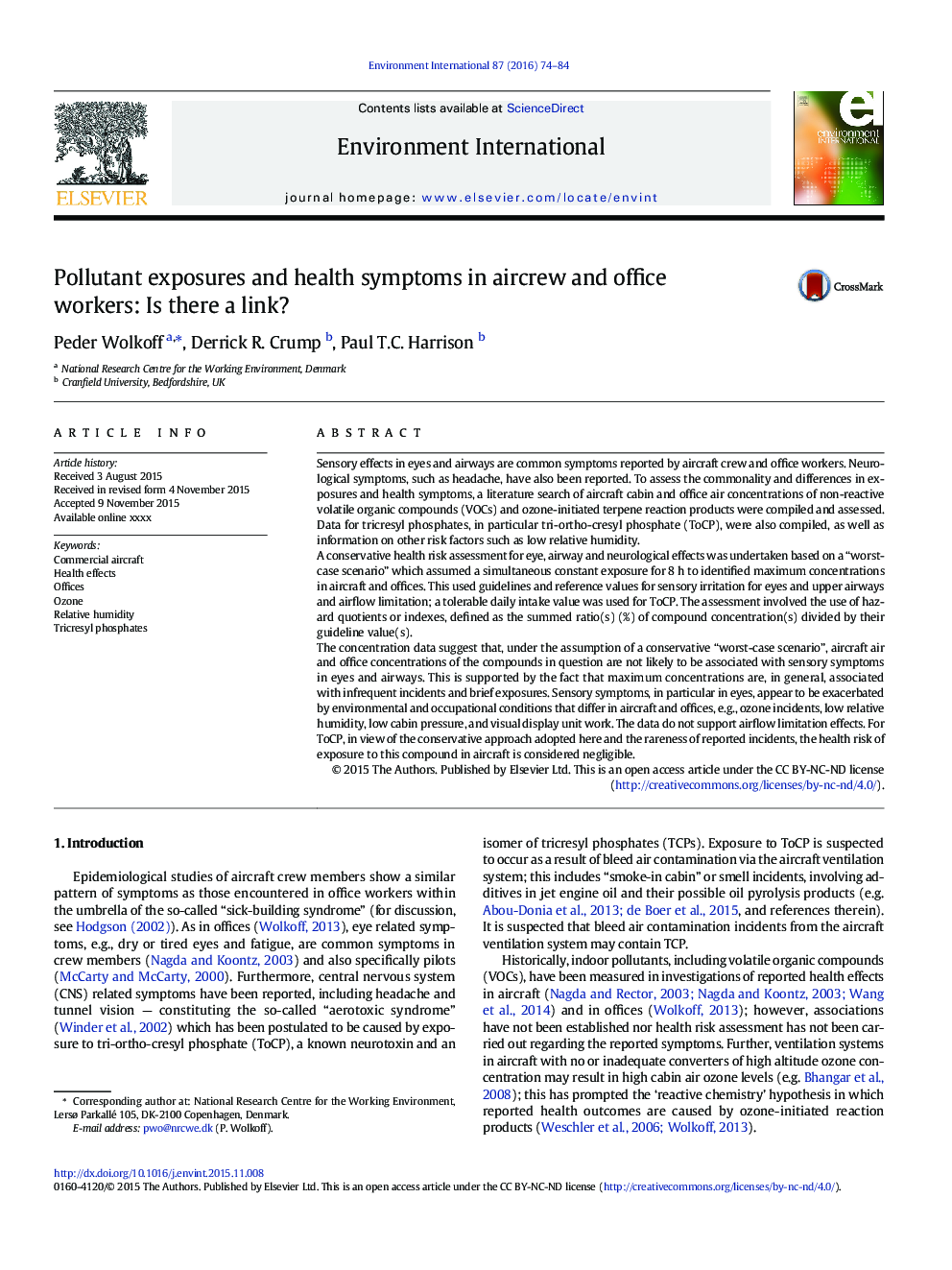| Article ID | Journal | Published Year | Pages | File Type |
|---|---|---|---|---|
| 6313313 | Environment International | 2016 | 11 Pages |
Abstract
The concentration data suggest that, under the assumption of a conservative “worst-case scenario”, aircraft air and office concentrations of the compounds in question are not likely to be associated with sensory symptoms in eyes and airways. This is supported by the fact that maximum concentrations are, in general, associated with infrequent incidents and brief exposures. Sensory symptoms, in particular in eyes, appear to be exacerbated by environmental and occupational conditions that differ in aircraft and offices, e.g., ozone incidents, low relative humidity, low cabin pressure, and visual display unit work. The data do not support airflow limitation effects. For ToCP, in view of the conservative approach adopted here and the rareness of reported incidents, the health risk of exposure to this compound in aircraft is considered negligible.
Related Topics
Life Sciences
Environmental Science
Environmental Chemistry
Authors
Peder Wolkoff, Derrick R. Crump, Paul T.C. Harrison,
